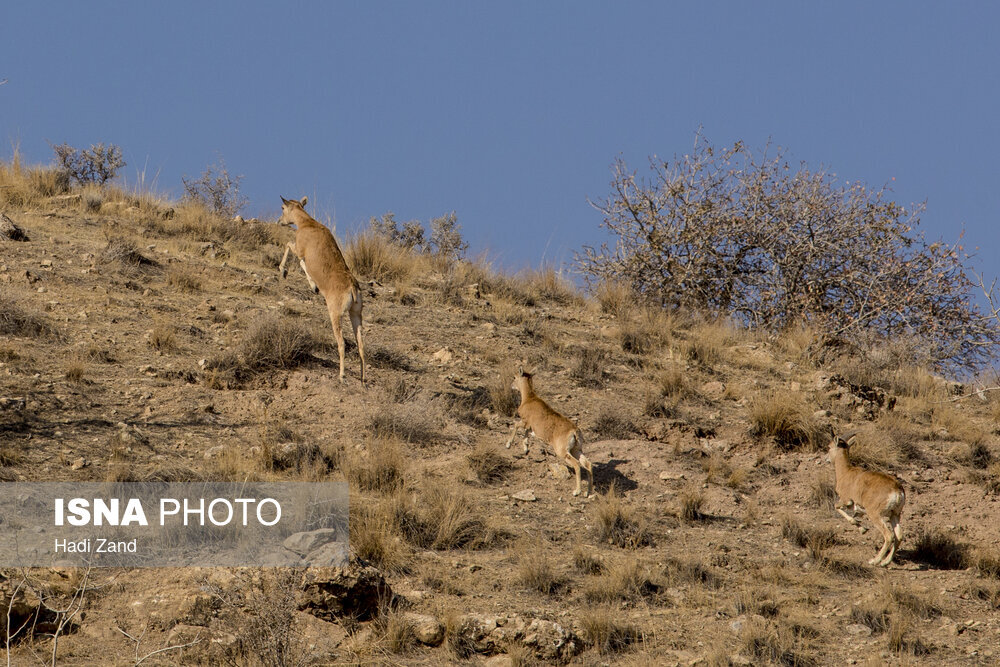Tehran national parks in danger

TEHRAN – Sorkheh Hesar and Khojir National Parks, located in the capital city of Tehran, are struggling with environmental problems.
Due to their proximity to the capital, they face more problems than other protected areas and national parks under the supervision of the Department of Environment.
The presence of tourists, mountaineers, and people, along with wildlife smugglers and even stray dogs, has made the wildlife in these two areas less safe.
The lack of fences and adequate equipment, the lack of clear boundaries of these national parks as well as the lack of rangers in these areas have caused many problems in these natural resources.
Sorkheh Hesar National Park lies with an area of 9,380 hectares and stands at an altitude of 1,547 meters above sea level, nearby Ray - Tehran 20th District. The whole of this forest park, except the northeastern part, has been managed by the Department of Environment since 1980. The major portion of this territory is a base for migrating birds during winter.
Khojir National Park is a protected area in the east of Tehran that covers about 10.013 hectares and has been designated as a National Park since 1982. Khojir is part of the Jajrood Protected Area, which has been selected as a royal hunting ground about 200 years ago, and in fact, it is the oldest hunting area in the country.
Khojir National Park is made up of high mountains and hilly, and semi-elevated hills.
Iran leading the world in protected areas growth
Statistics show that the growth rate of protected areas in Iran is higher than in many countries so the number of protected sites in Iran has risen about 37 times compared with 26 times on average in the world from 1962 to 2018.
To preserve the existing biodiversity over the wide geographic expanse of Iran, four types of areas have been designated for preservation and protection, including, national parks, wildlife refuges, protected areas, and natural national monuments. In 1997, the Department of Environment (DOE) held supervision over 7,563,983 hectares of such areas.
Currently, 30 national parks, 170 protected areas, 45 wildlife refuges, and 37 national natural monuments, measuring about 19 million hectares in the area are in the country.
According to the latest studies, about 1,300 species of vertebrates, including mammals, birds, reptiles, amphibians, and aquatic fish, about 30,000 species of invertebrates, and 8,000 species of plants have been identified in the country.
The Convention on Biological Diversity predicts that the average protected area in the world will reach 30 percent of the total area of a country. There is 11.6 percent of the protected areas in Iran. Therefore, the DOE introduced 29 areas with about 700,000 hectares as new areas to the Ministry of Agriculture, but there are some problems.
Of course, despite all these problems, the rate of Iran's protected areas is higher than many countries in the world, or over a 40-year period, the growth of these areas in Iran is higher than the global average, Ali Bali, deputy director of the habitats and regional affairs office of the DOE said.
One of the main threats to protected areas is habitat destruction, which may be done by government agencies to implement development projects, or in a more limited area by the locals.
The next challenge is mining and mining activities. Mines are the most incompatible activities against protected areas, poaching is another challenge for protected areas.
Drought, dust, human-made, and natural hazards such as wildfires are other challenges that threaten these areas, and on the other hand, the development of villages in or around protected areas also threatens the dynamism of these areas.
FB/MG
Leave a Comment